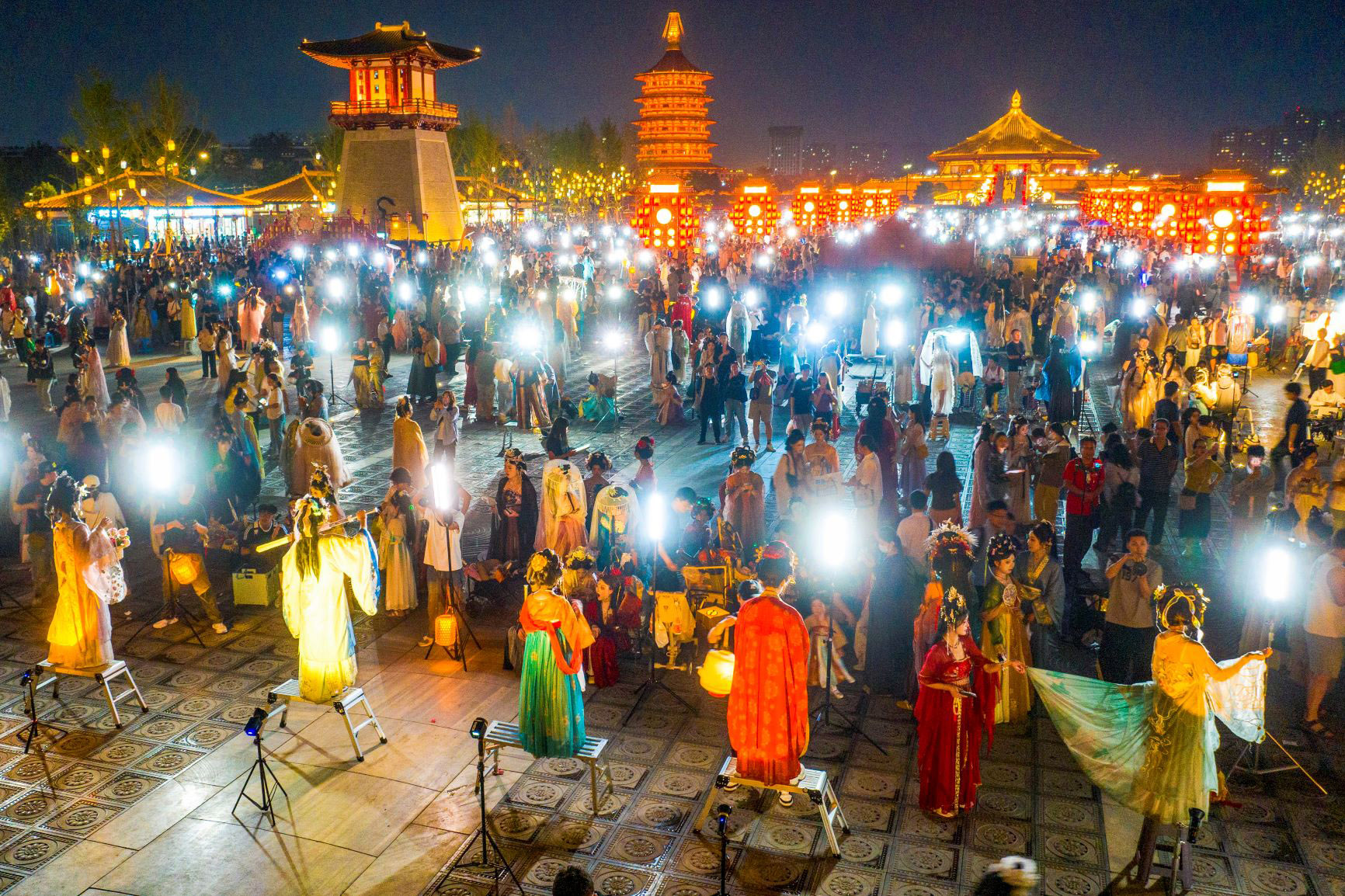
As dragon boats swiftly navigated the narrow waterways of the Diejiao water town in Foshan, Guangdong province, the crowds were thrilled at the jaw-dropping maneuvers and fierce competition.
The traditional racing event attracted more than 2 million visitors to the town during the Dragon Boat Festival holiday.
The Diejiao dragon boat race is an intangible cultural heritage in Foshan. The narrow and winding rivers there prompt the rowers to perform dramatic stunts and sudden stops during the race, earning it the nickname of the "fast and furious".
READ MORE: Dragon Boat Festival: China reports 10.8% rise in inter-regional trips
For example, in the Dongsheng competition section, each team of nearly 40 members must navigate a 25-meter-long boat at a high speed through a 560-meter course consisting of six sharp turns.
The roar of paddles was matched by the thunderous shouting and cheering of excited spectators. Among the visitors was a 27-year-old marketing manager from Shenzhen, surnamed Zhu.
"It was my first time seeing a dragon boat race up close, especially the thrilling bend sprints unique to Diejiao," he said. "The atmosphere was marvelous and unbelievable, and crowds packed the riverbanks and even rooftops."
"From incense rituals and firecrackers to dragon boat races and lively food stalls, the village was alive with tradition," he said.
During the Dragon Boat Festival holiday, from Saturday to Monday, Foshan received over 2 million visitors, marking a 46.11 percent year-on-year increase, said the local government.
Tourism revenue is estimated to have surged to 1.015 billion yuan ($141 million) during the three-day holiday, up 49.26 percent year-on-year, it added on Monday.
The competition in Foshan will last until June 15, and top teams from across Guangdong and those from other cities such as Hong Kong and Macao will be invited to participate.
Dragon Boat Festival is a traditional holiday honoring Qu Yuan, one of ancient China's greatest patriotic poets, and is marked nationwide by thrilling dragon boat races.
Data from travel services provider Qunar showed that, as of Monday, searches containing keywords like "dragon boat" and "zongzi" more than doubled compared with the previous month, and bookings for destinations offering folk culture experiences rose more than 40 percent.
In recent years, more areas have expanded their festivities by blending the races with local culture and tourism, creating richer and more immersive experiences for visitors and boosting the local economy.
In Haikou, Hainan province, about 40 teams, including those from Malaysia, Singapore and the Philippines, competed in international dragon boat racing from Saturday to Sunday, attracting over 219,000 visitors, Haikou Daily reported.
In Fujian province, Fangzhuang village, one of China's largest wood dragon boat manufacturing hubs, received over 200 orders for dragon boats this year, setting a record.
ALSO READ: Holiday tourism boom brings more mainland visitors to HK
Fang Jianwei, a dragon boat craftsman, said they have received orders from Fujian, Guangdong and Jiangxi provinces. There were also overseas orders, including those from the United States and Japan.
Dragon boat traditions go beyond southern China. This year, northern-style racing returned to the Beijing-Hangzhou Grand Canal in Cangzhou, Hebei province, after nearly 200 years.
"The race highlights not just speed, but also skill and creativity," said Zhang Ge, deputy general manager of Cangzhou Grand Canal Development Group, adding that the city plans to turn dragon boat shows into a regular tourism product, integrating cultural, social and economic benefits to boost Cangzhou's cultural tourism appeal.
Contact the writers at wangsongsong@chinadaily.com.cn


